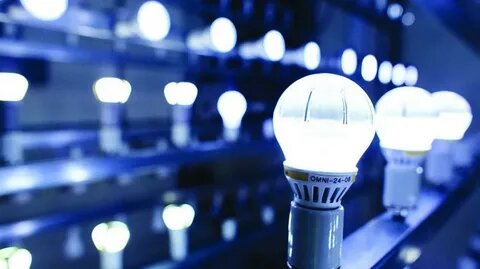Commercializing Lighting: Sustainability and Innovation in a Transforming Industry

The lighting industry has experienced remarkable shifts in recent years, driven by a growing focus on energy efficiency, sustainability, and technological innovation. As the world increasingly prioritizes environmental responsibility, the commercialization of energy-efficient lighting has become a key factor in the industry’s evolution.
At the center of this transformation is the demand for solutions that not only meet functional needs but also address sustainability challenges. John LaCorte’s extensive experience in the lighting industry offers valuable insights into these trends and how they are shaping the future of lighting.
The Commercialization of Energy-Efficient Lighting
One of the most significant developments in the lighting industry has been the commercialization of energy-efficient technologies, particularly LED lighting. LEDs have revolutionized the sector by offering a more sustainable alternative to traditional incandescent and fluorescent bulbs. These advancements have allowed businesses and consumers alike to reduce energy consumption, cut costs, and minimize their environmental impact.
LED lighting, which consumes significantly less energy than conventional lighting solutions, has rapidly become the standard for both residential and commercial applications. This shift has been driven by various factors, including government regulations promoting energy efficiency, growing consumer awareness of sustainability, and the desire for longer-lasting lighting solutions. With LEDs offering a lifespan that far exceeds that of traditional bulbs, their widespread adoption has helped reduce waste and promote sustainability.
LaCorte, who has been deeply involved in the commercialization of energy-efficient lighting throughout his career, has witnessed firsthand the impact of these innovations. Having led teams in the development of new lighting products, LaCorte has played a key role in pushing the industry toward more sustainable solutions. His work reflects the broader trend within the industry: the move from purely functional products to those that prioritize environmental responsibility and long-term efficiency.
Sustainability as a Core Value in Lighting
As climate change concerns continue to dominate global discussions, businesses across all industries are being called upon to reduce their carbon footprints. For the lighting industry, this means not only developing energy-efficient products but also adopting sustainable practices throughout the entire product lifecycle, from design and manufacturing to disposal.
The shift toward sustainability has been driven by both regulatory pressures and consumer demand. Governments worldwide are implementing stricter energy efficiency standards, requiring businesses to meet new environmental benchmarks. At the same time, consumers are becoming more eco-conscious, opting for products that align with their values. As a result, lighting companies are investing in research and development to create products that are both innovative and environmentally responsible.
LaCorte’s work in this space demonstrates how the lighting industry is responding to these challenges. Throughout his career, LaCorte has focused on developing products that meet energy efficiency standards while also pushing the envelope in terms of innovation. His approach emphasizes the importance of staying ahead of regulatory changes and anticipating consumer preferences, ensuring that the products his teams develop not only comply with current standards but also set new benchmarks for sustainability in the industry.
Innovation Driving Sustainability
Innovation has always been a key driver of growth in the lighting industry, and this is particularly true when it comes to sustainability. The development of smart lighting systems, for example, is one area where technology and sustainability intersect. Smart lighting allows users to control their lighting remotely, optimizing energy use by adjusting brightness levels, turning lights on and off automatically, and integrating with other energy-saving devices.
These systems are becoming increasingly popular in both residential and commercial settings, offering users greater control over their energy consumption and contributing to broader sustainability goals. In office buildings, smart lighting can adjust based on occupancy or natural light, reducing energy waste. In homes, users can manage their lighting through mobile apps or voice assistants, making it easier to conserve energy.
LaCorte has long understood the role that innovation plays in driving sustainability. His leadership in product development has always focused on integrating new technologies into lighting solutions to meet the evolving needs of consumers and businesses. By leveraging the latest advancements in smart lighting and other energy-efficient technologies, LaCorte has helped shape the future of sustainable lighting.
Challenges and Opportunities in Commercialization
While the commercialization of energy-efficient and sustainable lighting solutions presents significant opportunities, it also comes with challenges. One of the primary hurdles for businesses is the need to balance innovation with affordability. Developing cutting-edge, sustainable lighting products can be costly, and passing these costs on to consumers can limit widespread adoption. To overcome this challenge, companies must find ways to scale production and reduce costs while maintaining the quality and sustainability of their products.
Another challenge is navigating the complex regulatory landscape. As governments continue to implement stricter energy efficiency standards, businesses must stay informed about changes in regulations and ensure their products comply with new requirements. Failing to do so can result in costly fines and damage to a company’s reputation. On the other hand, companies that can anticipate regulatory changes and lead the way in developing compliant products will have a competitive advantage.
LaCorte’s experience in forming strategic partnerships and expanding business operations globally has given him a deep understanding of how to navigate these challenges. His work demonstrates the importance of staying agile and adaptable in an industry that is constantly evolving. By forming alliances with key stakeholders, from manufacturers to regulatory bodies, LaCorte has been able to position the companies he leads at the forefront of the industry.
The Future of Lighting
Looking ahead, the future of the lighting industry will continue to be shaped by sustainability trends and technological advancements. Energy efficiency will remain a top priority, and companies that can offer innovative, sustainable solutions will be well-positioned for success. As smart lighting systems become more integrated with other technologies, such as the Internet of Things (IoT), lighting products will become even more efficient, customizable, and user-friendly.
John LaCorte’s work in the lighting industry serves as a reflection of these broader trends. His focus on sustainability, innovation, and strategic thinking has positioned him as a leader in the commercialization of energy-efficient lighting solutions. As the industry continues to evolve, LaCorte’s insights and experience offer valuable lessons for businesses looking to navigate the challenges and opportunities ahead.
The commercialization of lighting is closely linked to the broader sustainability movement. Energy-efficient technologies like LEDs, smart lighting systems, and sustainable manufacturing practices are driving the industry forward. Leaders like John LaCorte, with their focus on innovation and adaptability, are helping to shape a future where lighting not only meets functional needs but also contributes to a more sustainable world. As the industry continues to evolve, businesses must remain focused on balancing innovation with sustainability to thrive in an increasingly competitive market.


